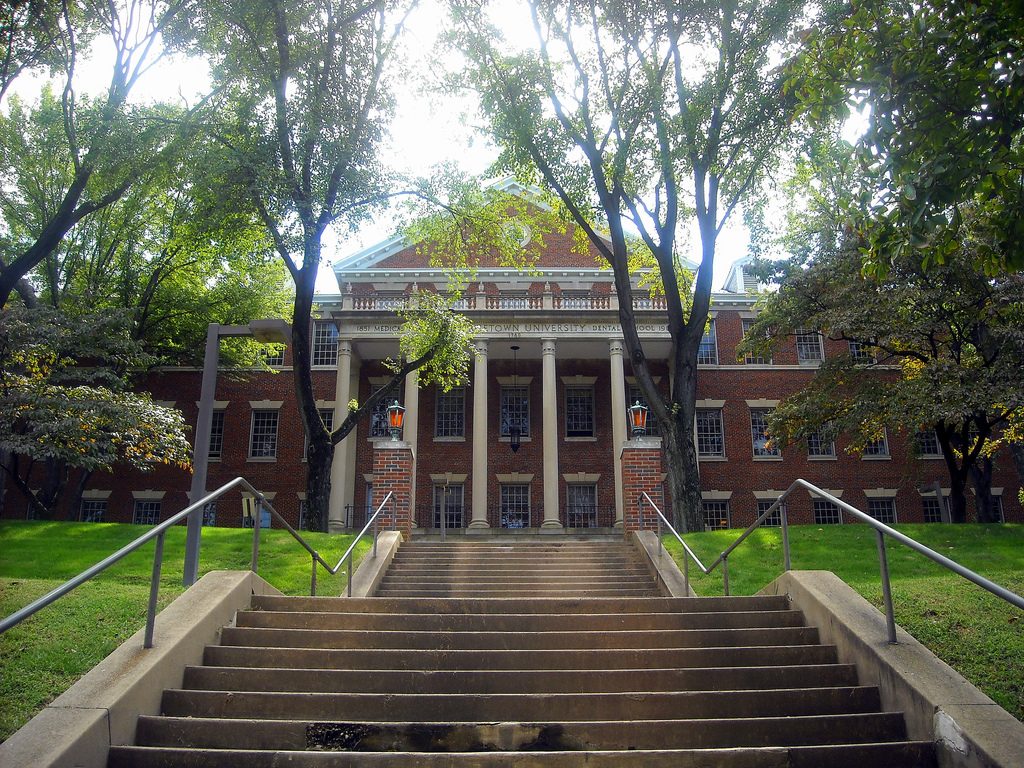We often have difficulty imagining things were different from what they currently are; the ability to envision a different world requires years of patient discipline to cultivate. Charles Taylor describes this phenomenon in his Modern Social Imaginaries, illustrating the struggle for the modern secular mind to envision the reality that undergirded an older, religious mentalité.
For the contemporary academy, an equally seismic shift occurred between the prescribed liberal arts curriculum and the elective courses available in the research university. For contemporary high school students looking at collegiate offerings, the triumph of the elective and research visions of the university is so total that maintaining space for the older liberal arts becomes a nearly impossible task. And yet, schools like The King’s College in Manhattan, Hillsdale College in Michigan, Grove City College in Pennsylvania, The Saint Constantine School in Texas, New College Franklin in Tennessee, and others of their kind, keep alive an older vision of collegiate education focused on human formation.
This essay will examine historic exemplars of both views, and conclude that the humane vision of a liberal arts education better justifies the leisure years spent in collegial study.
Defending a Prescribed Curriculum
Start your day with Public Discourse
Sign up and get our daily essays sent straight to your inbox.In 1828, the educational crisis of the day consisted of students rejecting the traditional prescribed curriculum; why, after all, should they be required to learn dead languages? In response, President Jeremiah Day and Professor James L. Kingsley of Yale College composed a ringing endorsement of liberal education as the best model for colleges. The report explains the goal of Yale’s educational path and provides a justification for why all students should follow the same course of study.
The two great points to be gained by intellectual culture, are the discipline and the furniture of the mind; expanding its powers, and storing it with knowledge. The former of these is, perhaps, the more important of the two. A commanding object, therefore, in a collegiate course, should be, to call into daily and vigorous exercise the faculties of the student. Those branches of study which should be prescribed, and those modes of instruction which are best calculated to teach the art of fixing the attention, directing the train of thought, analyzing a subject proposed for investigation; following, with accurate discrimination, the course of argument; balancing nicely the evidence presented to the judgment; awakening, elevating, and controlling the imagination; arranging, with skill, the treasures which memory gathers; rousing and guiding the powers of genius. All of this is not to be effected by a light and hasty course of study; by reading a few books, hearing a few lectures, and spending some months at a literary institution. The habits of thinking are formed, by long continued and close application. . . If a dexterous performance of the manual operations, in many of the mechanical arts, requires an apprenticeship, with diligent attention for years; much more does the training of the powers of the mind demand vigorous, and steady, and systematic effort.
Day and Kingsley argue for a prescribed course of study that engages the mind in certain habits of thought on a daily basis over the course of years. This sustained engagement with thought over time causes the habits of a liberal mind to become reflexive, and form the course of a lifetime of thought. Such study, they argued, bears immensely practical fruit:
there is no science which does not contribute its aid to professional skill. “Every thing throws light upon every thing.” The great object of a collegiate education, preparatory to the study of a profession, is to give that expansion and balance of the mental powers, those liberal and comprehensive views, and those fine proportions of character, which are not to be found in him whose ideas are always confined to one channel. When a man has entered upon the practice of his profession, the energies of his mind must be given, principally, to its appropriate duties. But if his thoughts never range on other subjects, if he never looks abroad on the ample domains of literature and science, there will be a narrowness in his habits of thinking, a peculiarity of character, which will be sure to mark him as a man of limited views and attainments.
The Yale Report argues that a liberal education equips the mind to move in different directions, preparing men indirectly for their later professions, but also enabling them to aspire to greater things than career success. The report articulated the traditional attitude toward college education: courses were prescribed, and an undergraduate degree was considered a precursor to professional studies. But by 1885, the convictions underlying the Yale Report had shifted to such a degree that Harvard President Charles Elliot’s proposed “elective system” established a new paradigm for American collegiate education.
The Rise of the Elective System
In an 1885 address, Charles Elliot explained and defended the elective system practiced at Harvard College. His goal was
to convince you that a university of liberal arts and sciences must give its students three things: I. Freedom in choice of studies II. Opportunity to win academic distinction in single subjects or special lines and study [and] III. A discipline which distinctly imposes on each individual the responsibility of forming his own habits and guiding his own conduct.
Elliot rejected the earlier claims of the Yale Report that colleges ought to limit themselves only to certain proven courses of instruction, arguing instead that “a university must try to teach every subject . .. for which there is any demand; and to teach it thoroughly enough to carry the advanced student to the confines of present knowledge, and make him capable of original research.” Elliot’s vision of college is concerned with progress and the advancement of knowledge. As an administrator, he espouses a desire to let the market drive course offerings. He defends his position that American students are capable of choosing the wisest course through Harvard’s offerings, claiming “the temperament, physical constitution, mental aptitudes, and moral quality of a boy are all well determined by the time he is eighteen years old.” This eighteen-year-old at Harvard is best able to determine his course of study, because “the only wisdom in determining those liberal studies which may be most profitably pursued after eighteen is to follow inclination.”
Elliot’s vision of students arriving at college and being given increasing amounts of curricular freedom became the main method of collegiate education throughout the twentieth century. His vision of total freedom never became completely real, but the prescriptive curriculum faded into a minority opinion. Over the course of the early twentieth century, the research university became the goliath of the academy, sustained by ever more precise research studies. The growth of the research university is paralleled by the spread of the elective system; as universities grew larger, and the focus of academic success shifted from teaching to research and publication, requirements for graduation decreased in prescription and rigor.
University As Community
Writing in 1950, Michael Oakeshott articulated a new vision of higher education, reframing the goal of a university from the production of knowledge to the induction of the student into a community.
In “The Idea of a University,” Oakeshott writes that the university, properly understood, is “not a machine for achieving a particular purpose or producing a particular result; it is a manner of human activity.” This activity can take different forms: “As the years go by, new studies appear above the horizon and old studies are rejuvenated by coming in contact with the new.” In this way, conversations among disciplines reflect what Oakeshott argues is a normative activity of the university.
What distinguishes a university [from other institutions] is a special manner of engaging in the pursuit of learning . . . A university, moreover, is a home of learning, a place where a tradition of learning is preserved and extended, and where the necessary apparatus for the pursuit of learning has been gathered.
Oakeshott argues that “three classes of people . . . compose a university as we know it—the scholar, the scholar who is also a teacher, and those who come to be taught, the undergraduates.” Oakeshott has room in his thought for the modern research university, and argues that even the most abstract-research-oriented professor can be of value to the student, because his deep study allows him the ability to bring the student into dialogue with his discipline. The scholar-teacher, however, sees his vocation primarily involving teaching. This kind of professor focuses more on the student-teacher relationship, and through his efforts he helps the student love the acquisition of knowledge. All of this is impossible without the undergraduates, who form the most transient part of this community.
The university, then, is a temporary community composed of people engaged in a dialogue stretching across disciplines and across years. For the brief span of his undergraduate education, the student is invited to set aside the practical concerns of life to engage in this study of worthwhile disciplines.
This power to educate has surprising effects. It does not make the graduate a particularly moral person, nor does it provide him the answers to life’s most important questions. Instead,
he will have acquired something that puts him beyond the reach of the intellectual hooligan, and whatever has been the subject of his study he may be expected to look for meaning in the things that have greatly moved mankind. Perhaps he may even have found a centre for his intellectual affections. In short, this period at a university may not have equipped him very effectively to earn a living, but he will have learned something to help him lead a more significant life.
The university then, for Oakeshott, is a beloved community of people who pursue learning together for a season. It is a blessing, but a temporary one. Oakshott provides the clearest picture of the transformative power a university can have, and his imagery puts words to the feeling many alumni have for their alma mater.
College as a mode of human activity survives not because all graduates succeed in the marketplace. Neither does it endure because undergraduates go on to produce new research. Instead, the collegiate activity endures because in each generation some students experience the transformative power of a community of study bound together not by practical utility but the love of a discipline. Brought into the life of the mind for a season, they are strengthened, challenged, and changed through the relationships forged in this season.
While the narrative of what Russell Kirk called Behemoth University continues, it is the liberal arts and their claim that education has the power to elevate the mind and soul that power the continued investment into college. The promise of a career or the ability to write correctly formatted technical reports does not justify years of debt. But the formation of the self and the entrance into an intellectual inheritance—these are the treasures that collegiate education promises.













